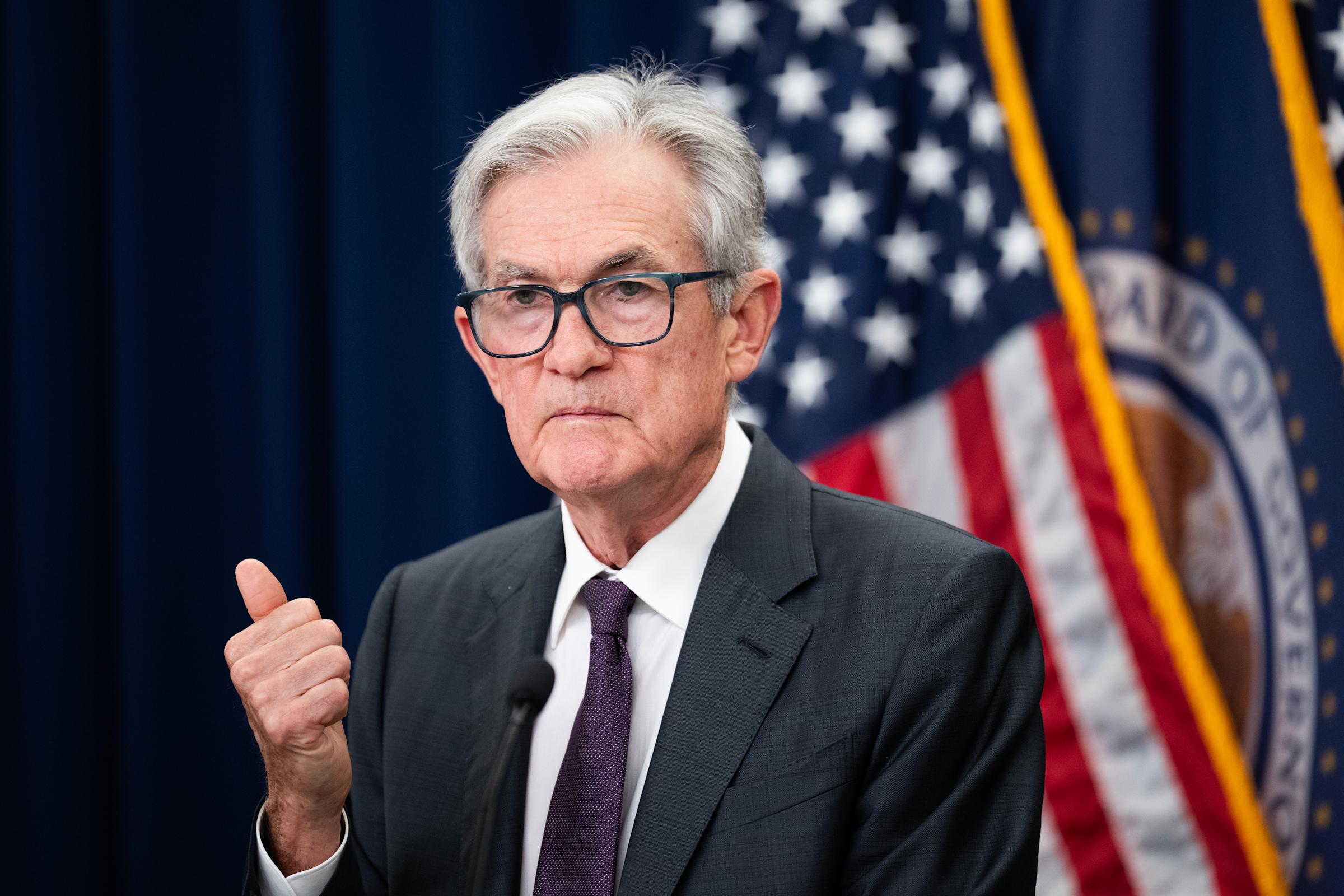Inflation data will highlight an otherwise tame earnings and economic calendar in the first full trading week of September as investor attention turns to the Federal Reserve’s next policy meeting.
Stocks finished last week on a down note, with stocks sliding after a soft August jobs report served as the latest piece of evidence that the US labor market is dramatically cooling down.
Treasury yields fell, however, as the odds of the Fed cutting rates at the conclusion of its Sept. 16-17 meeting moved to 100%.
Earnings reports last week offered a few updates on the consumer, with Dollar Tree (DLTR) suggesting higher-income consumers are trading down, Lululemon (LULU) results showing the athleisure trend appears to be fading, and American Eagle (AEO) results showing that a strong advertising campaign still moves the needle in 2025.
The week ahead will bring investors an even lighter earnings calendar, with Oracle (ORCL), Adobe (ADBE), and Kroger (KR) as the main highlights.
Outside of Thursday’s inflation data, the weekly update on mortgage rates will be closely watched. Consumer sentiment, out Friday, will offer another look at how Americans are feeling about a slowing job market and an uncertain mix of upcoming inflation pressures.
The Federal Reserve balances a dual mandate that seeks to maximize employment while keeping inflation at 2%.
Last month, Fed Chair Jerome Powell outlined the likely case for rate cuts, citing weakness in the job market and the risk that the US labor market could rapidly weaken further. Friday’s jobs report is a case in point.
But in the week ahead, the central bank is likely to learn it hasn’t made all that much progress on the latter part of this mandate.
Read more: How the Fed rate decision affects your bank accounts, loans, credit cards, and investments
Economists expect that consumer prices rose 0.3% over the prior month in August and 2.9% over the prior year. Both would mark an uptick in inflation from July and the Fed moving further from its goal.
On a “core” basis, stripping out the more volatile costs of food and gas, which can be impacted by commodities prices, inflation is set to rise 0.3% and 3.1% on a monthly and annual basis. These would match the increases seen in July.
“The July CPI indicated that tariffs are not the only challenge to the Fed finishing its fight against inflation,” Wells Fargo economists Sarah House and Nicole Cervi wrote in a note on Friday. “Sticky services inflation alongside the rebound in goods prices has stymied the disinflationary trend of the past two years and pushed inflation further from the FOMC’s target.”
“Further ahead,” they added, “we suspect higher tariff rates are here to stay as the administration has authority to increase customs duties beyond the International Emergency Economic Powers Act currently under legal scrutiny.”
In the post-pandemic economy, the surge in inflation to 40-year highs far outweighed any worries policymakers may have had about the labor market.
Indeed, through that bout of inflation, the labor market proved resilient. It wasn’t until Friday — when data for June was revised to show 13,000 jobs were actually lost during the month — that we’d seen any months of labor market contraction since late 2020.
With just 22,000 jobs created in August, the latest jobs report is not sending mixed messages — the US labor market hasn’t been this weak since the pandemic.
According to a Bloomberg report, US job growth through March was likely much weaker than official figures indicate, showing the labor market had already slowed well before the summer hiring drop.
The challenge that Black Americans are having finding work or the struggles of recent college graduates to find work are just two of the ways you can slice up this data to make an even finer point on the softness in the labor market.
Another is by industry. And here, the data is even more jarring.
In a note to clients on Friday, Rick Rieder, BlackRock’s chief investment officer of global fixed income, noted that over the past three months, healthcare accounts for more than all of the jobs created in the US economy. Excluding growth from healthcare, Rieder noted that total job growth is now negative for the first time in the past 25 years, outside of a recession.
And recessions, of course, are only declared in hindsight.
“We have cited for many months that healthcare has made up a very large portion of the jobs gained over the last two or three years, but with it now showing some tangible signs of decline, the foundation underneath the labor market seems to be cracking,” Rieder wrote.
Read more: How jobs, inflation, and the Fed are all related
Rieder expects the Fed to begin cutting rates this month, but with inflation pressures building, even this dour outlook for the US labor market likely keeps the Fed going with a “balanced and more restrained” 0.25% rate of cuts in the coming months.
“We think that people who describe the unemployment rate as still reasonably low (at 4.32%) are accurate in their assessment but incomplete in their evaluation,” Rieder added.
“The supply of labor through immigration has slowed markedly, and hence the supply of labor into the system has commensurately slowed. Yet, the velocity of labor and/or labor mobility is now extremely low,” he said.
The labor market is a confidence game, where workers spend based not only on what they earn today but also on what they may reasonably earn tomorrow. On the details, many workers still have plenty to go on when it comes to present earnings. As of August, there are “only” 313,000 more Americans out of work than there were a year ago.
But how quickly a growing portion of Americans think this number will rise weighs on the outlook for all segments of the US economic machine. And for those not in the healthcare industry, the picture has rarely looked more discouraging.
Economic data: Consumer credit ($10 billion expected, $7.37 billion prior)
Earnings calendar: Casey’s General Store (CASY), Planet Labs (PL)
Economic data: NFIB small business optimism (100.3 previously)
Earnings calendar: Oracle (ORCL), Synopsys (SNPS), Rubrik (RBRK), SailPoint (SAIL), GameStop (GME)
Economic data: MBA mortgage applications, week ending Sept. 5 (-1.2% previously); Producer price index, final demand, month-on-month, August (+0.3% expected, +0.9% previously); Producer price index, ex-food and energy, month-on-month, August (+0.3% expected, +0.9% previously); Wholesale inventories, July final reading (+0.2% previously)
Earnings calendar: Chewy (CHWY)
Economic data: Consumer price index, month-on-month, August (+0.3% expected, +0.2% previously); Consumer price index, year-on-year, August (+2.9% expected, +2.7% previously); Core CPI, month-on-month, August (+0.3% expected, +0.3% previously); Core CPI, year-on-year, August (+3.1% expected, +3.1% previously); Average hourly earnings, year-on-year, August (+1.2% previously); Initial jobless claims, week ending Sept. 6 (237,000 previously); Continuing claims, week ending Aug. 30 (1.94 million previously)
Earnings calendar: Adobe (ADBE), Kroger (KR)
Economic data: University of Michigan sentiment, September preliminary (59.3 expected, 58.2 previously)
Earnings calendar: No notable earnings.
Click here for in-depth analysis of the latest stock market news and events moving stock prices
Read the latest financial and business news from Yahoo Finance
Terms and Privacy Policy
Yahoo News – Latest News & Headlines
Read the full article .


